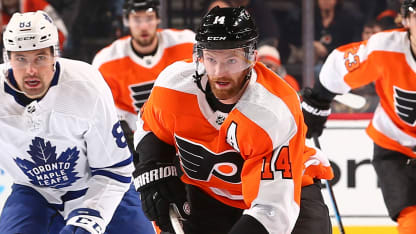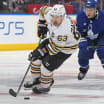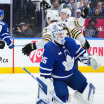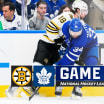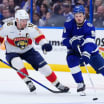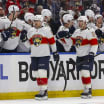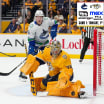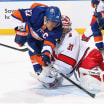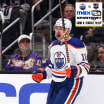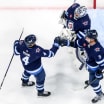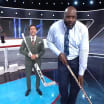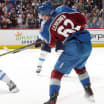When the Toronto Maple Leafs have their injured defensemen back and fit will there be a big uptick in performance, or is there a basic lack of balance in the team that will stop them from winning? -- @SPENCE\JOHN
The Maple Leafs were getting closer to full health on the back end, with Cody Ceci playing the final two games and Morgan Rielly returning for the last game before the pause in the season. Jake Muzzin was out with a broken hand, an injury he sustained Feb. 25. I have to think the Maple Leafs are more stable defensively when they have everyone healthy, including Muzzin. It gives them options, especially with the slow emergence of Rasmus Sandin. They were showing improvements by allowing three goals and an average of 30.3 shots on goal per game in their three games prior to the pause, including one goal on 33 shots in a 2-1 win against the Tampa Bay Lightning on March 10.
So it's a step in the right direction, but you're not going to convince me that Toronto's issues are because of its defensemen or a lack of balance. To me, it's more of a mindset that comes with experience and maybe the need for more grind in the Maple Leafs' game that at times plagues them. They are loaded with talent, but they are young and learning how to win in the NHL. Forwards Auston Matthews and Mitchell Marner are 22, and forwards Kasperi Kapanen and William Nylander are 23. So too is defenseman Travis Dermott. They are a big part of Toronto's core and they have not been given a fair amount of time to get it right. Expectations have been high since Matthews arrived as the No. 1 pick in the 2016 NHL Draft. But they're still learning things like situational awareness, on a game-to-game basis and in-game. For example, how can Toronto win three in a row, two on the road against the Florida Panthers and Lightning, and another at home against the Vancouver Canucks, and then go to California and score three goals in total, in three straight losses against the bottom three teams in the Western Conference? How do they go into the third period against the San Jose Sharks tied 2-2 and give up three goals, including two in 50 seconds, to lose 5-2? It's a lack understanding what it takes to go to the next level in the NHL. It's a lack of push and, when necessary, pushback. They've been hurt by this in the Stanley Cup Playoffs the past three seasons, which is why they haven't gotten out of the first round.
Does this mean the Maple Leafs are bad and going nowhere? No. It means they're young and learning. Alex Ovechkin, Nicklas Backstrom, John Carlson and Braden Holtby went through years of high expectations that led to playoff disappointments before they finally put it all together to lead the Washington Capitals to the Stanley Cup two years ago. The Maple Leafs will get there if they keep the core together and build around it the way the Capitals did.
Where do you think Mika Zibanejad ranks among centers in the League? -- @1994\nyr
The New York Rangers center has moved into the top 10 because he now has the ability to take over a game in the way that the elite centers in the League can do. We see it from Leon Draisaitl and Connor McDavid of the Edmonton Oilers, Nathan MacKinnon of the Colorado Avalanche, Sidney Crosby and Evgeni Malkin of the Pittsburgh Penguins, Jack Eichel of the Buffalo Sabres, and Matthews. Zibanejad was close to making my Selke Trophy list, knocked down only because the others had a better SAT, and although he plays 2:37 per game shorthanded, the Rangers are 23rd in the League on the PK at 77.4 percent. However, his overall game, complete with his skating, shot, forechecking and defensive awareness, makes him one of the best players in the League right now. I'd put Draisaitl, McDavid, Crosby and MacKinnon ahead of him, but I'd certainly be willing to listen to an argument for Zibanejad as the fifth best center in the League. It's an argument that would have been absurd to make before last season.
